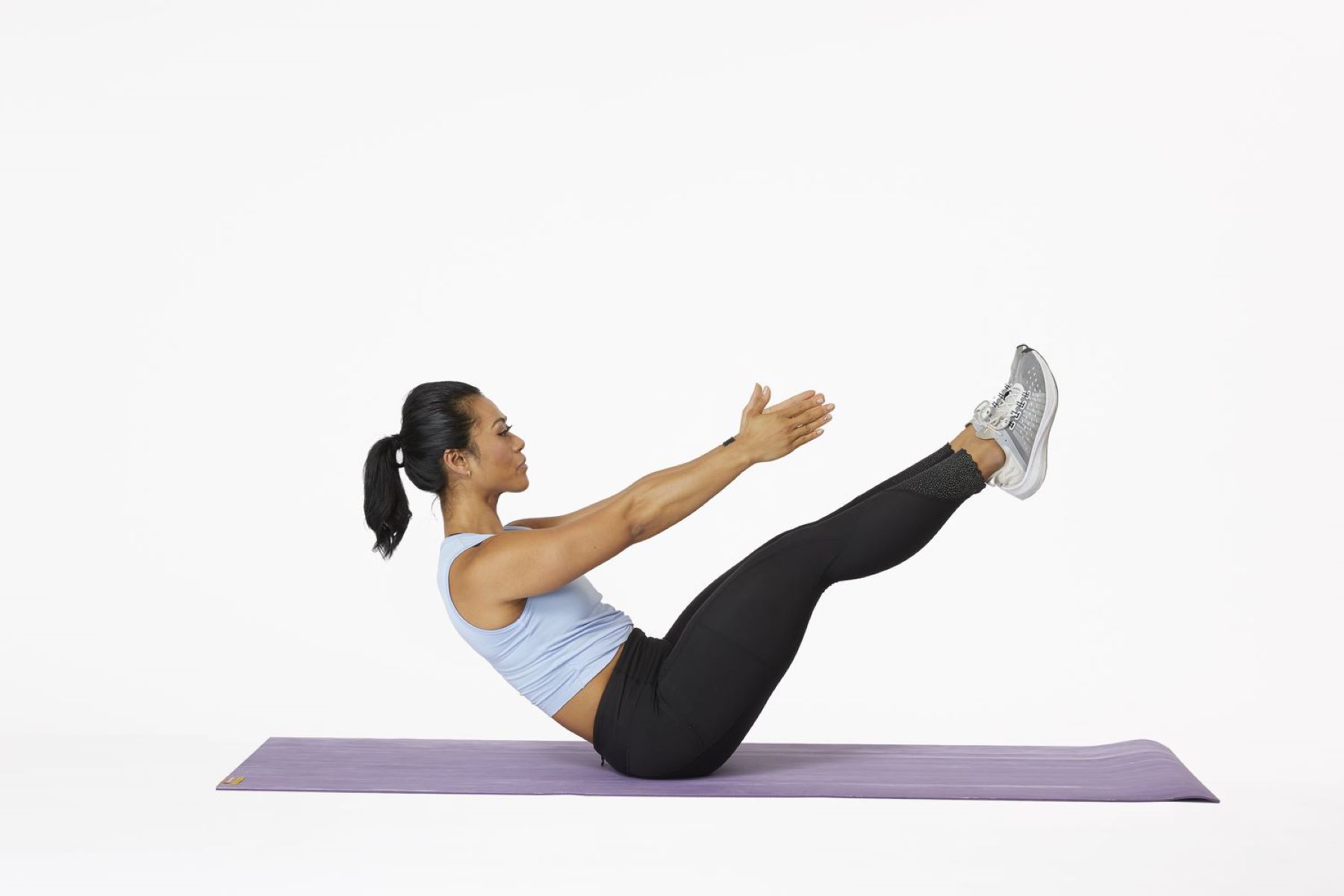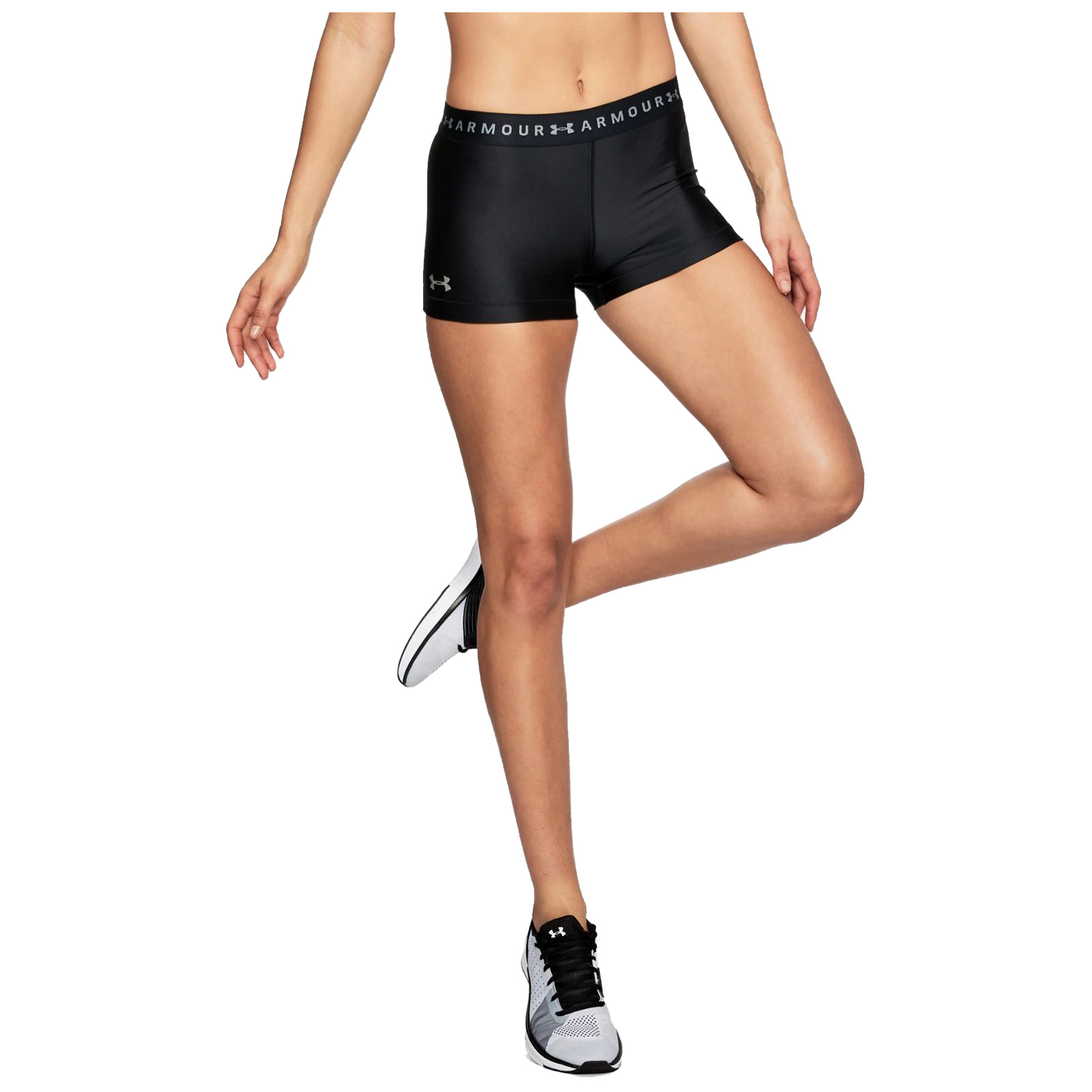

Featured
What Is A Sit Workout
Modified: August 21, 2023
Discover the benefits of the featured Sit Workout, a convenient way to improve fitness without leaving your seat. Enhance core strength, burn calories, and maintain flexibility with this effective exercise routine.
Introduction
Sit workouts, also known as seated workouts, are a form of exercise that can be done while sitting down. They offer a convenient and accessible way for individuals of all fitness levels to improve their strength, flexibility, and cardiovascular health, without the need for complex equipment or intensive movements.
Whether you have limited mobility, work long hours at a desk, or simply want to add variety to your fitness routine, sit workouts can be a great option. Unlike traditional workouts that require standing or vigorous movements, sit workouts allow you to engage in physical activity while comfortably seated in a chair or on an exercise ball.
Don’t let the simplicity fool you – sit workouts can be just as effective as their standing counterparts. By targeting specific muscle groups and incorporating controlled movements, these routines can help you build strength and tone your body.
Another advantage of sit workouts is that they are low-impact, which means they put less stress on your joints compared to activities like running or jumping. This makes them suitable for people with joint pain or those recovering from an injury.
In this article, we will explore the benefits of sit workouts, discuss different types of sit workouts, highlight popular exercises, provide tips for a successful sit workout, and answer some frequently asked questions.
Whether you’re looking to incorporate sit workouts into your daily routine or simply curious about this alternative form of exercise, this article will provide you with the necessary information to get started and reap the benefits of sit workouts.
Benefits of Sit Workouts
Sit workouts offer numerous benefits for individuals of all ages and fitness levels. Here are some of the key advantages:
- Convenience: One of the major benefits of sit workouts is their convenience. You can perform these exercises in the comfort of your own home, at the office, or even while traveling. All you need is a chair or stability ball, making it a perfect option for those with busy schedules or limited space.
- Improved Strength and Muscle Tone: Sit workouts target various muscle groups, including the core, arms, legs, and back. By consistently engaging these muscles through controlled movements, you can increase strength and improve overall muscle tone.
- Enhanced Flexibility: Regular sit workouts can help improve flexibility and range of motion in your joints. Incorporating stretching exercises into your routine can help reduce muscle stiffness and increase your body’s mobility.
- Cardiovascular Health: While sit workouts may not provide the same level of cardiovascular intensity as high-impact exercises, they still offer cardiovascular benefits. Engaging in consistent sit workouts can help improve heart health, increase blood circulation, and boost overall cardiovascular fitness.
- Increased Energy Levels: Sitting for extended periods can lead to feelings of sluggishness and fatigue. Sit workouts, on the other hand, can help combat these effects by increasing blood flow and oxygen to the muscles, resulting in improved energy levels and mental clarity.
- Improved Posture and Balance: Many sit workouts focus on improving posture and balance by targeting the muscles that support proper alignment. By incorporating exercises that strengthen your core and back muscles, you can enhance your posture, reduce back pain, and improve overall balance.
- Accessible for All Fitness Levels: Sit workouts can be modified and adapted to accommodate individuals of all fitness levels, from beginners to advanced. Whether you’re new to exercise or have existing physical limitations, sit workouts provide a gentle and accessible way to engage in physical activity and reap the benefits.
These are just a few of the many benefits that sit workouts offer. By incorporating them into your routine, you can experience improved strength, flexibility, cardiovascular health, and overall well-being.
Types of Sit Workouts
Sit workouts come in various forms, allowing you to choose the type that best suits your fitness goals and preferences. Here are some popular types of sit workouts:
- Chair Yoga: Chair yoga combines gentle yoga poses and stretches that can be performed while seated. These workouts focus on improving flexibility, strength, and relaxation. Chair yoga is particularly beneficial for individuals with limited mobility or who may find traditional yoga poses challenging.
- Resistance Band Workouts: Resistance bands are an excellent tool for sit workouts. These elastic bands offer resistance that helps engage and strengthen muscles while seated. You can use resistance bands for various exercises, such as bicep curls, shoulder presses, and leg extensions.
- Seated Cardio Workouts: Seated cardio workouts are designed to get your heart rate up and improve cardiovascular fitness. These routines often involve movements such as seated marching, arm circles, and seated jumping jacks. They are a great option for individuals with limited mobility or those recovering from an injury.
- Chair Pilates: Chair Pilates is a modified version of traditional Pilates exercises that can be performed while seated on a chair. These workouts focus on strengthening the core, improving posture, and enhancing overall body alignment.
- Seated Strength Training: Seated strength training involves performing various strength exercises while seated, using weights or resistance equipment. These workouts can target specific muscle groups, such as the arms, legs, chest, and back, and help increase muscle strength and tone.
- Stability Ball Workouts: Using a stability ball for sit workouts adds an element of instability, which helps engage the core and improve balance. You can perform exercises such as seated crunches, stability ball squats, and back extensions on the ball.
Remember, the type of sit workout you choose depends on your fitness goals, preferences, and individual capabilities. It’s important to listen to your body and choose exercises that are suitable for your fitness level.
Equipment for Sit Workouts
One of the great advantages of sit workouts is that they require minimal equipment. Here are some commonly used items that can enhance your sit workout experience:
- Chair: A sturdy chair with a straight back and no wheels is a staple piece of equipment for sit workouts. Look for a chair that provides stability and supports your body in an upright position.
- Stability Ball: A stability ball, also known as a Swiss ball or exercise ball, adds an additional challenge to sit workouts. It helps improve core strength and stability by engaging your abdominal muscles while seated.
- Resistance Bands: Resistance bands are lightweight, portable, and versatile. They provide resistance to help strengthen and tone muscles during sit workouts. Choose different levels of resistance bands based on your fitness level and exercise requirements.
- Weights: Dumbbells or hand weights can add extra intensity to your sit workouts. Choose weights that are appropriate for your fitness level and allow for controlled movements without straining your muscles.
- Ankle Weights: Ankle weights can be used during sit workouts to target the muscles in your legs and boost resistance. Start with lighter weights and gradually increase the resistance as you become more comfortable and stronger.
- Mat: A comfortable mat or cushion can provide extra support and cushioning during sit workouts, especially for exercises that require you to be seated or lying down on the floor.
Remember that while some equipment can enhance your sit workout experience, it is not essential. You can still achieve a challenging and effective sit workout using just a chair and your body weight.
Before purchasing any equipment, make sure to consult with a fitness professional or do thorough research to ensure that you select the right items for your specific needs and goals.
Popular Sit Workout Exercises
There are numerous effective and popular exercises that you can incorporate into your sit workout routine. Here are some examples:
- Seated Marching: Sit tall in your chair and lift one knee, then the other, as if you’re marching. Engage your core and maintain a controlled and steady pace. This exercise helps increase heart rate and improve cardiovascular fitness.
- Chair Squats: Start by sitting towards the edge of your chair. Stand up from the chair, keeping your knees aligned with your feet and your core engaged. Slowly lower yourself back down into the chair. Chair squats target your quadriceps, hamstrings, and glutes.
- Seated Leg Extensions: Sit straight in your chair and extend one leg in front of you, keeping your knee straight. Hold for a few seconds and then lower your leg back down. Repeat with the opposite leg. This exercise targets the quadriceps and helps improve lower body strength.
- Seated Twist: Sit tall with your feet planted on the ground. Place your right hand on your left knee and gently twist your torso to the left. Hold for a few seconds, then repeat on the other side. The seated twist helps improve flexibility in your back and strengthens your oblique muscles.
- Chair Yoga Sun Salutation: Start in a seated position with both feet planted on the ground. Inhale and reach your arms overhead, then exhale and bring your hands down to your heart. Repeat this sequence a few times, coordinating your breath with the movements. The chair yoga sun salutation improves overall flexibility and promotes relaxation.
- Bicep Curls with Resistance Bands: Sit with your feet firmly planted on the ground and grasp the resistance bands in each hand. With your palms facing upward, bend your elbows and lift the bands towards your shoulders. Slowly lower them back down. This exercise targets the biceps and can be done with varying levels of resistance.
These are just a few examples of popular sit workout exercises, but there are plenty more to explore. Remember to start with exercises that are suitable for your fitness level and gradually increase the intensity as your strength and flexibility improve.
If you’re unsure how to perform certain exercises or want to learn more, consider consulting with a fitness professional or searching for instructional videos or online resources that demonstrate proper form and technique.
Tips for a Successful Sit Workout
To make the most out of your sit workout routine, here are some tips to keep in mind:
- Check with Your Doctor: If you have any pre-existing medical conditions or concerns, it’s always a good idea to consult with your doctor before starting a new exercise program, including sit workouts. They can provide guidance specific to your health needs.
- Warm Up and Cool Down: Just like any other workout, it’s important to warm up your muscles before starting your sit workout and cool down afterwards. Take a few minutes to do some light stretching and gentle movements to prepare your body for exercise and prevent injury.
- Maintain Proper Form: Pay attention to your posture and form during sit workouts. Sit up tall, engage your core, and avoid slouching. This will help you target the intended muscle groups and reduce the risk of strain or injury.
- Start Slow and Gradually Increase Intensity: If you’re new to sit workouts or have been inactive for a while, it’s important to start slowly and gradually increase the intensity of your exercises. Focus on proper form, and listen to your body’s limits to avoid overexertion.
- Breathe Properly: Breathing is essential during any workout. Remember to inhale deeply through your nose and exhale fully through your mouth. Coordinating your breath with your movements can help you stay focused and energized throughout your sit workout.
- Stay Hydrated: Even though you may not be sweating as much during sit workouts, it’s still important to stay hydrated. Keep a water bottle nearby and take regular sips throughout your workout to maintain good hydration levels.
- Listen to Your Body: Pay attention to how your body feels during and after your sit workout. If you experience any pain, discomfort, or excessive fatigue, modify or pause the exercise. It’s essential to listen to your body and avoid pushing yourself beyond your limits.
- Stay Consistent: Consistency is key when it comes to any exercise routine. Aim to incorporate sit workouts into your weekly schedule and make them a regular part of your fitness routine. This will help you see progress and reap the benefits of your efforts over time.
By following these tips, you can ensure a successful and enjoyable sit workout experience. Remember to take it at your own pace, have patience with yourself, and celebrate your progress along the way.
Frequently Asked Questions (FAQs)
Here are some commonly asked questions about sit workouts:
- Can sit workouts help with weight loss?
- Can sit workouts help with back pain?
- Are sit workouts suitable for everyone?
- How often should I do sit workouts?
- Do I need any special equipment for sit workouts?
- Are sit workouts effective for building muscle?
Sit workouts can contribute to weight loss when combined with a balanced diet and an overall active lifestyle. While they may not burn as many calories as high-intensity workouts, they still provide cardiovascular benefits and help build muscle, which can help increase your metabolism.
Yes, sit workouts can be beneficial for individuals with back pain. Strengthening the core and maintaining good posture through sit workouts can help alleviate back pain and improve overall spinal stability.
Yes, sit workouts can be adapted to suit individuals of all fitness levels and abilities. Modifications can be made to accommodate physical limitations, making them accessible for a wide range of individuals, including those with mobility issues or injuries.
The frequency of your sit workouts depends on your fitness goals and overall health. It is recommended to aim for at least 30 minutes of moderate-intensity exercise, including sit workouts, on most days of the week. However, it’s important to listen to your body and give it adequate rest and recovery between sessions.
While some equipment like a chair, stability ball, or resistance bands can enhance your sit workout experience, they are not essential. You can still achieve a great workout using just your body weight. You can gradually invest in equipment as you progress and feel the need for added resistance and variety.
Yes, sit workouts can help build muscle strength and tone, particularly in the core, arms, and legs. By engaging specific muscle groups through targeted exercises, you can gradually increase muscle mass and improve overall muscle definition.
If you have any further questions or concerns regarding sit workouts, it’s always recommended to consult with a fitness professional or healthcare provider who can provide personalized advice based on your specific needs and goals.
Conclusion
Sit workouts offer a convenient and accessible way for individuals of all fitness levels to engage in physical activity and reap numerous health benefits. Whether you have limited mobility, work long hours at a desk, or simply want to add variety to your fitness routine, sit workouts provide an effective alternative to traditional exercises that require standing or intense movements.
By incorporating sit workouts into your routine, you can improve strength, flexibility, cardiovascular health, and overall well-being. These workouts are low-impact, making them suitable for individuals with joint pain or those recovering from an injury. Additionally, sit workouts can be modified to accommodate various fitness levels, making them accessible to everyone.
There are various types of sit workouts to choose from, including chair yoga, resistance band exercises, seated cardio workouts, chair Pilates, seated strength training, and stability ball workouts. Additionally, popular sit workout exercises such as seated marching, chair squats, and seated leg extensions can help you target specific muscle groups and enhance your fitness levels.
To have a successful sit workout experience, it’s important to maintain proper form, listen to your body, start slow, and gradually increase intensity. Warm up and cool down, breathe properly, and stay hydrated throughout your workout. Consistency is also key – aim to incorporate sit workouts into your routine on a regular basis to see progress and maximize the benefits.
While sit workouts offer numerous benefits, it’s important to remember that everyone is unique. If you have any concerns or underlying health conditions, it’s always a good idea to consult with a healthcare professional or fitness expert before starting a new exercise program.
So, whether you’re looking to add variety to your fitness routine, improve flexibility and strength, or simply want to exercise in a more convenient way, consider giving sit workouts a try. With their accessibility, versatility, and numerous health benefits, sit workouts can be an excellent addition to anyone’s fitness journey.






